Royal Arcerion Fire Service
 Badge of the Royal Arcerion Fire Service | |
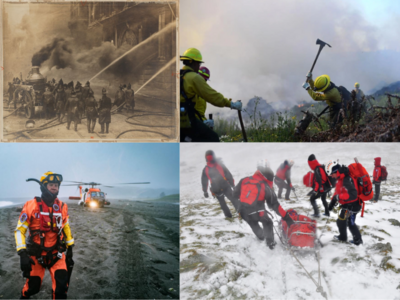 (Clockwise from top left) Duties and employment of RAFS in Arcerion; Members of the Kurst Fire Department (RAFS) fight a structure fire in 1868; Firefighters with the Hendricks County Fire Department fight a Category 3 wildfire in Northlea Governorate, 2019; Members of the Easthampton Fire Department (RAFS) Rescue Team 2 extract an injured hiker from the Aileach Mountain Range in 2020; A rescue swimmer from the Chester-on-Moore Fire Department (RAFS) Maritime Search and Rescue Team 1 during a SAR demonstration in 2016. | |
| Agency overview | |
|---|---|
| Formed | 1847 |
| Preceding agency |
|
| Type | Emergency Services |
| Jurisdiction | Domestic |
| Headquarters | John F. Frederickson Emergency Services Building Dalfearn, Arcerion |
| Motto | "To answer the call" |
| Employees | 97,000 full-time 46,000 part-time/volunteer |
| Agency executive | |
| Parent agency | Ministry of the Interior |
| Website | urlwww.rafs.arc |
The Royal Arcerion Fire Service (RAFS) provides wildland firefighting services, Hazardous Materials Response services, search and rescue services (including maritime), and emergency medical response services to the Governorates and Counties of Arcerion. It is under the jurisdiction of the Ministry of the Interior and is one of the primary disaster response agencies in Arcerion. The Royal Arcerion Fire Service is one of the largest federal fire services in Crona, and is the most operational, responding to the largest number of emergency events, search and rescue missions, and wildfires every year in Southern Crona. It is also the oldest organized Fire Service in Crona, and one of the largest international centers for firefighting training, having established relationships with other Occidental nations. It is also a global leader in Ixnay in areas such as disaster response, urban search and rescue (USAR), austere environment search and rescue (AESAR), maritime search and rescue, wildfire suppression and management, and HAZMAT operations.
The Royal Arcerion Fire Service is led by the Commissioner, currently Nathan Hillsborough, appointed by the Minister of the Interior. Within the Arcer government, it is one of the oldest established non-military federal institutions.
History
Pre-Founding
Prior to the establishment of the Fire Service, firefighting in Arcerion was purely volunteer-based and done by locals. Individual towns and villages had vastly disparate amounts of fire equipment and manpower, leading to a vast difference in responses and ability. This was identified as a problem during two major fires, the first in 1807 in Kurst, which destroyed a low-rent neighbourhood, killing several dozen people. The second occurence burned the port facilities of Chester-on-Moore for several days until the blaze could be brought under control in 1822. The Chester-on-Moore Port Fire crippled maritime trade and the influx of immigrants and new settlers to Arcerion for several years, and during the boom and increase in colonial population growth, many thousands of these settlers ended up in Kurst or Kinnaird, which ultimately would end with them becoming larger and more influential cities in Arcerion.
The economic impact of the fire created an urgent need to establish better firefighting protocols and a more structured response. The Confederate Parliament in 1841 drafted a memo to the Carnish Crown, identifying that fire and emergency services in Arcerion has to be improved. The monarchy internalized the report, and in 1845 provided guidance and permission for the creation of a school to train firefighters, based in Kurst. The Royal Arcerion Firefighting Institute was constructed and trained several generations of volunteer firefighters, prior to the Royal Decree establishing the FIre Service two years later.
Early History (1847-1900)
The Royal Decree issued by the Carnish Crown in 1847, upon the advice of the Crown-Governer of Arcerion and the Confederate Parliament established the provision for a 1,000-strong firefighting service, which was to be bestowed with the 'Royal' title and provide services to Kurst, Kinnaird, and Chester-on-Moore. It would also incorporate the Royal Lifesaving Service, a small boat and sea rescue volunteer organization that had been operating since the earliest settlements in Arcerion. The amalgamation of these two services was formalized in the summer of 1847, and several hundred volunteer firefighters were hired as full-time firemen to serve in the new uniformed service.
By 1870, the Fire Service had expanded operations into Craigfearn and Norham Governorate, with multiple smaller departments and crews based around Moorden and the first crew in Norham in 1868. The establishment of crews in Easthampton specializing in mine rescue highlighted the increasing specialization of the service, which thus far had combatted multiple major city fires, including the Royal Arcerion Ordnance Stores fire, preventing a massive explosion that could have destroyed much of Kurst in 1865. However, decentralized crews led to a disorganized approach, and the first Fire Commissioner was appointed in 1878, Stephen MacDonnell, who would centralize many of the systems and reporting methods for fires. MacDonnell introduced community fire bells, one of the first emergency signaling systems, wherein an increased response by firefighters could be leveraged with more notice of where and when fires were occurring. MacDonnell also pursued the construction of a pair of lifesaving cutters, which would then be mass-produced along the Arcer coast in small-boat rescue teams, allowing them to conduct better lifesaving operations.
Investments into the Royal Arcerion Firefighting Institute also included the graduation of more recruits, and by the mid 1890s the Carnish Crown authorized an increase in the number of full-time firefighters to 4,000 - enough to satisfy the requirements of the growing Cronan colony. The rapid industrialization of Easthampton and Chester-on-Moore also required the first Fire Inspectors, a role for senior firemen to inspect buildings to ensure there was no unnecessary risk or increased chance of fire from negligent workplace practices.
Turn of the Century Firefighting (1900-1948)
By the turn of the century, the Royal Arcerion Fire Service had over two-dozen departments spread amongst five different cities and countless smaller towns and villages. Arcerion became the first Occidental nation to introduce motorized fire trucks, with Engine No.1 (now a museum piece at Frederickson Collegiate) being fielded by the Chester-on-Moore Fire Department in 1906. The technological increases in firefighting also required an increase in the amount of work done with city planners as Arcer towns became more urbanized and had more inhabitants. Fire Codes were drafted and recommended by the Fire Service to the Confederate Parliament, which ratified them in 1903. Fire hydrants became available in Kurst in 1908, which required a major overhaul of the existing water and plumbing infrastructure for the city.
During this period, the influential Fire Commissioner Edward Sutherland pioneered the creation of an integrated telephone-reporting system, and by 1910 every city block in major Arcer cities (save for Easthampton) had a dedicated fire notification phone for the purpose of notifying a switchboard operator of an emergency. During this time, the first mountain rescue team was established in Easthampton to facilitate assistance for an increased number of Occidental tourists travelling to visit the city and trek in the Aileach Mountain Range. Sutherland also oversaw another increase in the manning for the Fire Service, which by now required 15,000 firemen to staff all of its various departments. Sutherland also implemented a formalized progression and compensation system, which structured the ranks within the Fire Service, and received approval from the Treasury Office to create the Fireman's Pension Fund, which after 20 years of service offered a pension. One of the first civilian services to offer this, as at the time the Army's pension was still based on a payout of land deed, livestock, and farming equipment to assist with the settlement of Northlea Governorate.
Divestment and Decay (1948-1967)
With the conclusion of the Second Great War, many firefighters who had gone off to fight in The Cape, or other Arcer expeditionary operations in Levantia or the Carnish Civil War returned either wounded, unwilling to resume firefighting duties, were killed in action, or were wounded and physically unable to return to duty. During this time, the vast amount of younger firemen had received a Parliamentary Furlough in order to man the Reserve Brigades of the Arcer Army. This meant that a large number of departments had to leverage veteran firefighters too old for military service, or call-up part time firemen to ensure the Fire Halls and departments were still at an acceptable level of manning. However even with the return of several thousand firemen, many chose to take post-war pensions, remain in the Army, or pursue other careers not in Firefighting or Search and Rescue. This created a crisis in the Fire Service, the resulting fallout which was the divestment of almost all of the city and municipal firefighting duties to part-time or volunteer departments.
The nearly twenty years following this period were epitomized by a lack of direction, funding, implementation of technology, and a lack of manpower. The Fire Service gradually became irrelevant as it no longer had to crew the city fire services, and the Search and Rescue services along the coast and in the mountains had long been a secondary task, and therefore not received enough funding or equipment to be effective. This trend would continue to correlate with negative impressions of the Fire Service, and recruitment initiatives and non-competitive pay discouraged new applicants. Additionally, the baby boom experienced in Arcerion post-war resulted in many young adults by the 1960s joining other federal services (such as the Army, which was currently fighting the Fourth Bush War), or pursued other civilian private-sector employment in the economic boom during the antebellum period.
Modernization and Expansion (1967-2000)
The Fire Service received new direction and by extension, new life in 1967. A significant drought in Northlea Governorate resulted in the outbreak of an initially small wildfire 150km from Presdale. However, fast-moving winds and a significant amount of dead foliage and dry underbrush meant that this quickly turned into what would be categorized later as the first Category 5-fire. Multiple towns were caught in the firestorm, and dozens of Arcer citizens were burned to death. The Fire Service deployed almost all of its available manpower, most arriving by Arcer National Railway Service coaches, and over the course of three weeks, fought the 1967 Wildfire to a standstill 14km from Presdale, saving the booming Arcer Heartland town from burning down. This prompted quick action from the Confederate Parliament, who lauded the on-scene commander, then-Captain John Francis Frederickson. Frederickson, born in a middle-class suburb outside of Chester-on-Moore to a father who was a career firefighter, and his grandfather a member of a small-boat rescue team had joined the Fire Service as an ordinary fireman shortly after the Second Great War, upon his return in the early 1950s. Over twenty-five years of firefighting, he had served most of his time in the Easthampton Fire Department, only transferring to Dalfearn Fire Department a few months before the 1967 Wildfires. Frederickson's overall command and control of the wildfires, using control lines, burnouts, and knock down dirt tracks to effectively combat the fire. These techniques would become wildfire-combatting standard operating procedures over the next fifty years.
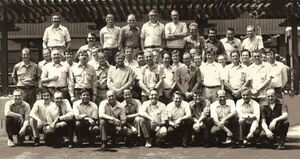
Frederickson was promoted to Fire Commissioner, where he would also oversee a large amount of change to the Fire Service. He outlined a four-point approach to the improvement of the Fire Service in a 1968 Memo:
- Increased funding for support services such as communications, training, and infrastructure;
- Procurement of new vehicles, equipment, and systems for the Fire Service;
- Restructuring of the Fire Service;
- Public Affairs blitz to increase recruitment and ease manning shortfalls.
The increased funding was approved by a worried Parliament who say the 1967 Wildfire as the first of many, and narrowly avoided the loss of a major Heartland city. They correctly assumed, as several other Category 5 fires would occur not only in 1967, but in the years following there was a rising trend. The funding Frederickson secured was then used to improve 'soft' support systems such as pay, compensation, and training. The Royal Arcerion Fire Institute was turned into a museum at its original location, and a new training centre was set up in Dalfearn, as well as the first runway and helipads for Fire Service aircraft.
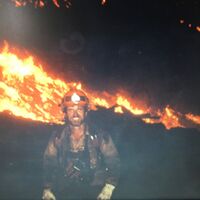
New firefighting vehicles, aimed at wildfire operations and support to emergency and natural disaster response were procured and developed, which augmented legacy equipment (such as axes unchanged since the 1920s) being life cycled out in favour of newer equipment such as chainsaws, radios, and modern re-breathing equipment. As well, the Maritime Search and Rescue services received a massive influx of funding to start their rescue swimmer program, including the first maritime search and rescue helicopters operated by a civilian service in Crona. A massive restructuring of the Fire Service also occurred, which aligned it almost exactly to modern standards, the only changes made since this restructure was the addition of HAZMAT training programs and research teams with the Emergency Services Act of 2000. Frederickson's revolutionary leadership and response to the changing face of emergency services in Arcerion would cement his legacy as one of the greatest civil servants in Arcer history. He retired in 1984, after thirty three years in the fire service, passing away in 1998, shortly before the passing of landmark legislation from Confederate Parliament to further institutionalize and solidify the changes and gains he had pioneered with over a decade of leading the Fire Service.
Emergency Services Act (2000)
The Emergency Services Act of 2000 was passed to codify and make unto law many of the changes and advancements the Fire Service had pioneered since the 1967 Wildfires. It provisioned that the Fire Service would have a ceiling of 110,000 full-time members, and half that in part time. It updated pension, salary, and rank requirements, and also increased provisions of payouts and medical compensation for those injured in the line of duty, notably including provisions for cancer and illnesses that were service-related. It also named the Fire Service as the leading service for Emergency Response and national disaster planning, meaning that the Fire Service now provides a senior officer to the Ministerial Coordination Element, to enhance cooperation with other services. It also provisioned a much large budget for the service, with scheduled increases every 5 years for a twenty year period, to give some stability outside of political considerations due to the continued rise of forest fires and emergency calls.
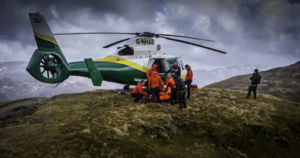
Modern Period (2001-present)
The Fire Service since 2001 has responded to numerous domestic and international incidents. For example, its first international assistance operation was in response to the 2007 Malentina Floods, where it provided airlift, search and rescue, and expeditionary trauma medical support, in conjunction with members of the Arcerion Armed Forces. It continues to lead Ixnay in forest and wildfire fighting techniques, and provides technical and emergency assistance to city and municipal fire departments on request as the senior Fire Service in Arcerion.
It respond son average to over 2,000 calls a year, and continues to deploy Maritime Search and Rescue teams, aerial responses, and wildfire teams all 12 months of the year in support of emegrency services requirements of the Arcer people.
Organization
The Royal Arcerion Fire Service is sub-divided into two major branches, those being the Operational Branch, and the Support and Services Branch. Overall command of the RAFS is under the Commissioner, who is appointed by the Minister of the Interior and usually serves for 3-5 year terms. Each of the two branches in turn is commanded by a Deputy Commissioner. The Deputy Commissioners each oversee their respective branches and receive their direction and guidance from the Commissioner.
Operations Branch
The Operations branch is the 'action arm' of the Fire Service, providing on the ground response for emergency calls and conducting local engagements with civilians and local fire departments to better prepare Arcer citizens for incidences of emergencies or fires.
The Operations Branch is divided into multiple 'Divisions' or groupings of departments based on allotment of assets, manpower, and available resources. Larger fire departments may only have an area of responsibility of one county, however groupings of smaller departments or counties may be administratively commanded by a Chief, who will pool their resources and equipment for simplified command and control during operations. Each Department is usually organized along County lines, although larger cities such as Kurst or Kinnaird may have multiple federal teams to augment existing city fire departments.
The Operations Branch has two major types of teams, those being Fire Teams and Rescue Teams. The smaller, third specialized form of team are generally referred to as "Support" teams, and these are categorized as teams providing a dedicated or specific function outside the purview of firefighting or SAR, such as HAZMAT, complex rescue, or enabling assets such as austere communications support or forward trauma teams.
Fire Teams
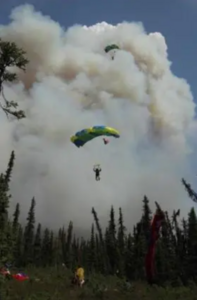
Fire Teams are the principle wildfire and forest fire fighting element in Arcerion. Ever since the divestment of city structure fire services in the 1950s, these teams focus mainly on the protection of government, civilian, and economic infrastructure from different kinds of fires. Occasionally, they will respond to structure fires in remote areas where regular fire services at the municipal or city-level are unable to respond (ie. the Northumbraeland Mountains), however this is not common. Fire Teams vary in size, but usually are commanded by a Lieutenant, and are comprised of 10-20 firefighters organized into multiple sections. These sections are organized ad-hoc depending on the environment and requirements as deemed by that department. This includes equipment used or rank structure within, but sections usually have a variety of specialists and are commanded by a Sergeant. County Fire Department Fire Teams operate in shifts, usually working in 12-hour rotations for several days, followed by a rest period of several days off. However, during wildfire season, it is not uncommon for Fire Teams to remain forward deployed for days or weeks at a time battling fires in the Arcer Heartland. There is also volunteer Fire Teams, usually comprised of students, veteran firefighters that have retired, or working professionals, and should the civilian authorities in each governorate provide a call-up, they can be used to augment full-time Fire Teams. Some Fire Teams, in conjunction with the Aerial Services division have 'Smokejumpers,' a capability unique to Arcerion and that has set the standard for this type of work across Ixnay. These are firefighters that parachute into austere or remote locations of wildfires to conduct firefighting with limited access to equipment, support, or water. Often, this involves the use of creating 'burn lanes' to stop fires ahead of time. As of 2026, only four smokejumper teams were operational, all of which were in Northlea Governorate.
Rescue Teams
Rescue Teams are one of the specialist capabilities that each Fire Services Department has. They encompass a wide variety of different types, from Light Urban Search and Rescue (LUSAR), to austere environment search and rescue (AESAR), as well as maritime search and rescue. Rescue specialists are usually senior firefighters, and are required to go back to the Special Fire School of Arcerion for additional training on trauma and advanced medical care, rappelling, high-angle climbing, cold-weather operations, rescue swimming, static-line and freefall parachuting (done through the Arcer Army's facilities), advanced communications training, and field expedient shelter creation. The teams are frequently used to respond to natural disasters such as floods, landslides, storms, shipwrecks/vessels in distress, avalanches, and missing persons.
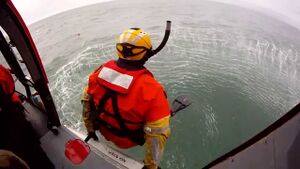
Rescue Teams are seen as one of the most revered civilian professions and institutions in Arcerion. Every year, the Fire Service conducts a limited number of training courses to qualify new Rescue Specialists, to replace Firefighters returning to Fire Teams, retiring, or leaving the Fire Service. Since 1967, sixty-five Rescue Specialists have been killed while on rescue operations or during training, which averages to approximately one Rescue Team specialist a year. This reflects the dangerous and difficult work the Recue Teams are expected to do, and as such they receive additional pay and compensation to reflect the strenuous requirements of the environment. Rescue Teams are usually smaller in size that an ordinary Fire Team, numbering on average 8-10 members, and while technically the Fire Service expects it to be commanded by a Lieutenant, in practice it is more common for a Sergeant or a Fireman 1st Class to be leading a Rescue Team. While there are some volunteer Rescue Teams, these are generally for less demanding tasks such as missing persons rescue or light urban SAR, as the training, fitness, and readiness required to be a part of a maritime or mountain rescue team are too high for part-time firefighters.
Aerial Services Division
The Aerial Services division provides the Royal Arcerion Fire Services with rotary-wing, fixed-wing, unmanned aerial system, and technical aviation support for firefighting and rescue operations. Aerial Services Teams are organized into 'Squadrons,' and are often co-located at Arcer Air Force (AAF) bases. Due to the complex nature of these types of missions, pilots are full-time pilots holding the rank of Lieutenant or Captain, and go through the Arcer Air Force pilot training cycle before returning to the Fire Service for service in the Aerial Services Division in a squadron. The Aerial Services division works closely with Fire Teams and Rescue Teams due to the size of Arcerion and the need to quickly deploy teams across governorates. It commonly will use helicopters to insert and extract Fire Teams fighting brushfires or wildfires in the Arcer Heartland, or use its larger fixed wing aircraft to deploy Smokejumpers or Rescue Specialists to areas where helicopters cannot access effectively due to limited range. As well, the Aerial Services Division uses unmanned aerial systems (UAS) and light fixed-wing aircraft to provide remote command-and-control of Fire Teams during wildfire season, as well as situational awareness for teams on the ground about wind direction, fire path, and other factors that may affect the employment of Fire Teams.
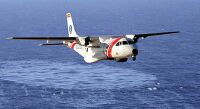
The Aerial Services division currently spans all five governorates, and has two dedicated squadrons for Howland Governorate, due to the difficulties of operating in inclement weather. Helicopter and plane squadrons generally have between 12-16 air frames, and depending on maintenance generally 2/3rds of these are operational and serviceable.
Support and Services Branch
The Support and Services Branch provides all of the background support to enable the day-to-day functioning of the RAFS, and the generation of new firefighters for the Operations division. The Training and Research Division's primary mandate is the intake and education of new firefighters every year to sustain the manning levels of the entire Fire Service. The primary source of these recruits comes from Frederickson Collegiate (formerly the Royal Arcerion Firefighting Institute), named for the revolutionary RAFS Commissioner John Francis Frederickson who revolutionized the Fire Service in the 1960s and 1970s. Secondary to this is the additional education portion of the Division. It is aimed to provide firefighters with additional training on complex operations, such as HAZMAT operations or Maritime Search and Rescue. This is organized under the Special Fire School of Arcerion, which also annually hosts courses for international candidates.

The Research Bureau represents a multi-faceted approach to the profession of firefighting and the delivery of emergency services. They assign individual research teams, usually comprised of a mix of civilian contractors, professional scientists, research fellows, and experienced firefighters on secondment from the Operations Branch to understand the modern problems facing the Fire Service, conduct research and analysis to determine solutions, and prevent senior staff with predictive modelling and recommended courses of action. A recent example was the introduction into the Aerial Services Division of unmanned aerial systems (UAS) to assist with wildfire tracking and prediction. By using UAS, it lessened the burden on lighter fixed-wing platforms, and allowed Fire Teams on the ground to adjust and respond as situations developed on the ground, helping keep Firefighters safe but also maximizing the effectiveness of limited Fire Service manpower as the Arcer Heartland wildfire crisis continues to grow in the wake of global climate change.
The Logistical Services Division provides the backbone of the Fire Service. It delivers communications systems, network infrastructure, maintenance and repair facilities, and facility management support for all of the Operations Branch. This differs from other fire services where the support services may be more dislocated, but assigned to every Department or facility is a number of Logistical Services personnel, both uniformed and civilian, with some contractors, who deliver everything from radio programming and troubleshooting to aircraft maintenance support. Additionally, the Logistical Services Division also conducts the Testing and Evaluation (T&E) of new equipment to procure for the Fire Service. This includes personal protective equipment (PPE) such as rebreathers, entry tools for structural operations, rappelling and climbing equipment, to capital procurement projects such as the Fire Service's helicopter and fixed-wing fleet, unmanned drones, fire trucks, and life cycle management of existing Royal Arcerion Fire Services Buildings.
Ranks
- Commissioner, Royal Arcer Fire Service
- Deputy Commissioner
- Chief (various groupings of Departments, often referred to as a 'Division')
- Captain (Department)
- Lieutenant (Fire, Rescue, or Support Team)
- Sergeant (Assistant to Team Leadership)
- Fireman, 1st Class
- Fireman, 2nd Class
- Fireman, 3rd Class
- Probationary Fireman
Locations of Major Departments and Services
Training
Recruit Intake
Frederickson Collegiate (Royal Arcerion Firefighting Institute)
Ironically partially destroyed in a fire
Assignment
Further Specialization
Specialized Schools and Training Centres
Operations
Equipment, Vehicles, and Aircraft
International Partnerships
- Fire Seneschalcy of Burgundie
- International Corps of Incident Commanders, Fire Engineers, HAZMAT Technicians, Search and Rescue technicians, and Response Logisticians (Burg: Ceurps Internationale des Commendants des crises, pompiers-sapeurs, HAZMATeuers, guardiens des Vitale, et Logisticiens des crises)
In Popular Culture